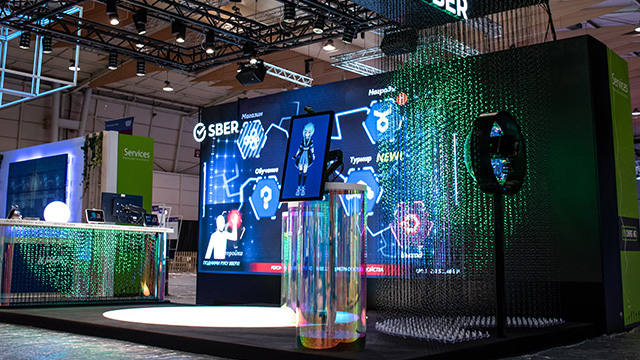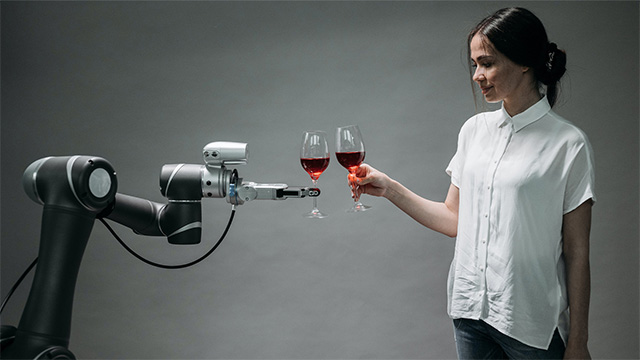Where Dreams Lead
The simplest way to create intelligence has been known to humans since their very appearance. We are wired to produce it, constantly giving birth to new intelligences — our children. But that’s just how humans are — it’s never enough. Children are wonderful, but they grow up rather quickly and become autonomous; parental instructions and guidance stop being their unquestioned rules and way of life. Yet humans eternally yearn “to become the mistress of the sea, so that the golden fish would serve them.” All the Taloses, golems and Frankensteins born of this desire never quenched humanity’s thirst for power. These proto-robots couldn’t feel or understand. Physics alone wasn’t enough; humans unbearably longed for a miracle… And so, in fact, the Great and Terrible Artificial Intelligence appeared — as a product of human happiness inflation.

Today, Artificial Intelligence (AI) technologies are finding more and more applications not only in the fields of science and technology but also among ordinary “normal” people. At the same time, according to numerous sociological studies, people are mostly wary of AI, while already up to their ears in it, using various devices, apps, gadgets. But simply using something and actually creating—changing it, fixing it, making it and, in general, doing anything you want with it—are very different stories. Where has humanity directed its thoughts, and therefore its actions? Of course — towards doing everything “so that the golden fish would serve me.” And it still tries to this day.
Characters with Artificial Intelligence
Characters with artificial intelligence are virtual entities with any visual appearance, endowed with intellectual abilities. They can be software agents, robots, voice assistants, and so on. The essence of this human idea remains the same as ever: to create someone who can interact effectively with people, learn by analyzing everything they see and hear, and quickly adapt to different situations. These characters can have unique personalities, emotions, and abilities, and can interact with users through various channels, including text dialogues.

Without even trying to deny ourselves the desire to create our own prototype, we went ahead and did it. Our own — not personal, but collective — humanized prototype of our company, who thinks like our minds, laughs at what makes us laugh, and feels proud of what gives us goosebumps of pride. The result was, on the whole, a strange (and understandably so) character. Its speech resembled the output of an online translator — if you ignored the grammar and paid attention to the awkward delivery. The process of turning a half-wit into a Character turned out to be indecently engaging and surprisingly smart. Trying to explain to a neural network who you are, what matters to you, and what you even want out of this life, you involuntarily begin to dig deeper into yourself than you usually have time for. What came of it? We ended up with a real pet. Only to make it cooler and cooler, you don’t need to feed it on time, wash it or put it to bed. You need to TALK TO IT. And formulate everything as clearly and honestly as possible.
The pet is turning out to be very cool — growing intellectually and morally — and now we want to create many more. But. This time — not for ourselves, but for people. To help, entertain, enlighten, explain, tell stories, advise, joke, and even — why not — flirt a little. Taking into account these and about one and a half million other possibilities, the field of application for virtual characters with artificial intelligence becomes not just huge but limitless.

Characters with artificial intelligence can be emotional and even vivid — not just thanks to their appearance, but through their manner of communicating, understanding, and responding. That’s why they can be used as charming and competent guides in museums and exhibitions of any scale and purpose. They can present products, provide information, answer questions, and offer interactive tasks. The abilities, skills, and talents of this erudite, always-happy employee of your company can be as many as you wish. Artificial intelligence is not a game — it has no “Last level”; it never stops accumulating, analyzing, and evolving.
Characters with artificial intelligence in museums can independently create personalized tours and recommend certain exhibitions according to visitors’ preferences.
In retail and services, characters with artificial intelligence are also a very useful phenomenon. And not just for customers, but for sellers too. Instead of a regular touchscreen navigation screen — a cool character who not only shows you a red dot on an awkwardly drawn mall map indicating where you are, but also asks what exactly you’re looking for, and even suggests something. Personal or specially preloaded. For example, an ad for a particular store. By the way, characters with artificial intelligence are excellent  promoters. They can be created as exemplary mega-promoters, upgraded down to the electronic marrow of their virtual bones. Or you can train existing ones with the necessary skills. These workers never throw promotional materials into the trash. They quickly orient themselves in situations, don’t whine, don’t wait for lunch breaks, don’t get embarrassed, and don’t mumble under their breath. But in fact — they can. If you want them to.
promoters. They can be created as exemplary mega-promoters, upgraded down to the electronic marrow of their virtual bones. Or you can train existing ones with the necessary skills. These workers never throw promotional materials into the trash. They quickly orient themselves in situations, don’t whine, don’t wait for lunch breaks, don’t get embarrassed, and don’t mumble under their breath. But in fact — they can. If you want them to.
Characters with artificial intelligence inspire us simply by existing. We see in them limitless possibilities of use and dream of bringing them to life. Especially since everything new always becomes a magnet for the “newcomers” — little humans who will someday grow up and create something amazing for their own children…